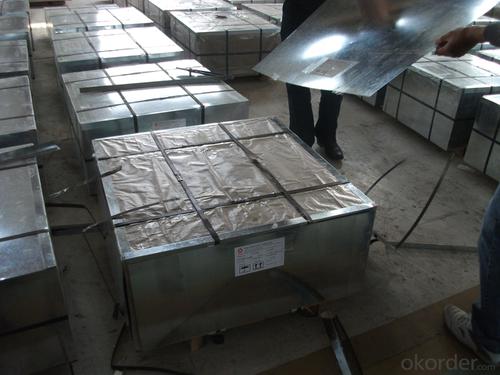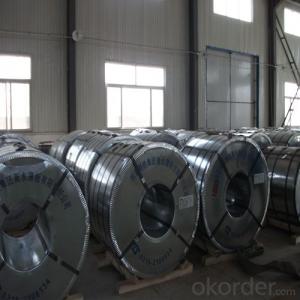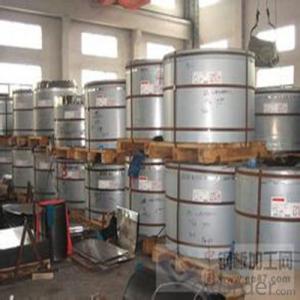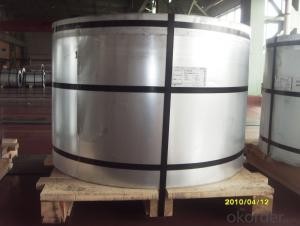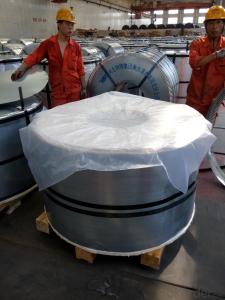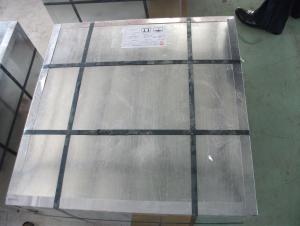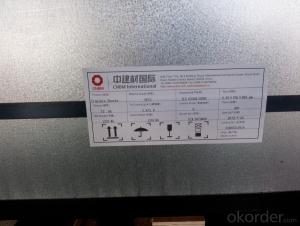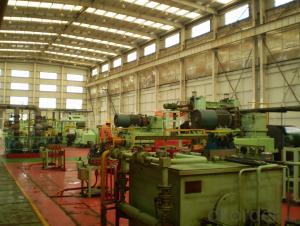ETP TINPLATE of Prime or Secondary Quality
- Loading Port:
- China Main Port
- Payment Terms:
- TT OR LC
- Min Order Qty:
- -
- Supply Capability:
- -
OKorder Service Pledge
OKorder Financial Service
You Might Also Like
Our Tinplates Specification:
Standard: ISO 11949 -1995, GB/T2520-2000,JIS G3303,ASTM A623, BS EN 10202
Material: MR,SPCC
Thickness:0.15mm - 0.50mm
Width: 600mm -1150mm
Temper: T1-T5; DR8 - DR10;
Annealing: BA & CA
Passivation:311
Oil: DOS
Surface: Finish,bright,stone,matte,silver
Packing:
1、For sheets: plastic or waterproof paper, metallic cover and angles, steel strips,wooden pallet.
2、For Coils: plastic or waterproof paper,plastic protect plate,steel strips.
Coil Inner Diameter: 508mm
Weight: 6-10 tons/coil
Application: widely used in every kinds of packing cans,such as tea packaging cans, painting packaging cans, chemical packaging cans and dry food packaging cans; and also mechanical parts
Both Prime and Second Quality Are Available!!!
- Q: What are the challenges in manufacturing tinplate?
- Some of the challenges in manufacturing tinplate include ensuring consistent coating thickness, preventing surface defects such as scratches or dents, controlling the tinplate's flatness and shape, and managing the overall production costs. Additionally, maintaining a clean and stable production environment, optimizing the manufacturing process to meet customer demands, and adhering to quality standards are also significant challenges in tinplate manufacturing.
- Q: How does tinplate affect the overall barrier properties of packaging?
- Tinplate enhances the barrier properties of packaging by providing a protective layer that prevents oxygen, moisture, and other external factors from permeating the package. This improves the shelf life and quality of the product, ensuring its freshness and integrity for a longer period.
- Q: How is tinplate cut and formed into different shapes?
- Tinplate is cut and formed into different shapes through a process called stamping. In this process, the tinplate sheet is placed between two dies, a male and a female die, and pressure is applied to cut and shape the metal into the desired form. The dies have the desired shape engraved on them, and when pressed together, they cut through the tinplate and form it into the desired shape.
- Q: What are the printing options for tinplate?
- The printing options for tinplate include lithography, screen printing, and digital printing.
- Q: Can tinplate be used for packaging luxury goods?
- Yes, tinplate can be used for packaging luxury goods. Tinplate is a versatile material that offers both functionality and aesthetic appeal, making it suitable for high-end products. Its durability, resistance to corrosion, and ability to maintain product freshness and quality make it an excellent choice for luxury packaging. Additionally, tinplate can be easily decorated and customized with high-quality printing and embossing techniques to enhance the visual appeal and create a premium look for luxury goods.
- Q: How does tinplate packaging contribute to product protection during shipping?
- Tinplate packaging provides excellent product protection during shipping due to its durability and strength. It acts as a sturdy barrier against external elements such as moisture, light, and air, preventing damage or contamination to the product. Additionally, tinplate packaging's ability to withstand rough handling and stacking ensures that the product remains intact and undamaged throughout the shipping process.
- Q: What are the different ways to customize tinplate packaging?
- There are several ways to customize tinplate packaging. Some common methods include printing or embossing designs or logos directly onto the tinplate, applying decals or labels, using different colors or finishes, adding metallic or matte effects, and incorporating additional elements like windows or handles. These customization options allow businesses to create unique and visually appealing tinplate packaging that aligns with their brand identity and stands out on the shelves.
- Q: How is tinplate used in the production of aerosol valves?
- Tinplate is used in the production of aerosol valves as it provides a protective and corrosion-resistant coating to the valve components. This prevents the valve from rusting or reacting with the contents of the aerosol, ensuring the reliable and safe functioning of the aerosol valve.
- Q: How to open cans
- Swiss Army knife, it has opened the canned fruits with tools under the hook can cover the exterior edge of front edge force canned fruit like a ring, groove cover on the edge of... The pressure inside a circle, do not pay attention to the head word screwdriver pressed in, or it may have wear. Under the hook can cover the exterior edge of front edge force under pressure can, like a ring groove on the side of the roof... Pressed in a circle, do not pay attention to the head word screwdriver pressed in, or you may wear. This tool is also very easy to use.
- Q: What are the main challenges in the recycling of tinplate?
- Some of the main challenges in the recycling of tinplate include the separation of tin and steel components, as well as the removal of any contaminants or coatings on the surface of the tinplate. The varying thickness and composition of tinplate can also pose challenges during the recycling process. Additionally, ensuring the collection and proper disposal of tinplate waste from various sources can be a logistical challenge.
Send your message to us
ETP TINPLATE of Prime or Secondary Quality
- Loading Port:
- China Main Port
- Payment Terms:
- TT OR LC
- Min Order Qty:
- -
- Supply Capability:
- -
OKorder Service Pledge
OKorder Financial Service
Similar products
Hot products
Hot Searches
Related keywords



